The Kanshudo Blog - older posts
Welcome to the Kanshudo blog! Here you can find older blog posts; the most recent ones are
here.
Posted: 2018-01-24,
Tags:
newfeatures
studyaids

Today we are delighted to introduce a major new feature on Kanshudo: the Kanshudo Challenge!
Kanshudo Challenge has been in development for many months, and is the result of several years of study into the most effective way to teach kanji and words. We are confident that Kanshudo Challenge is the most sophisticated system available for studying kanji and Japanese vocabulary. Not only is Kanshudo Challenge extremely effective, it is fun, and fast.
Take the Kanshudo Challenge now! Challenge
A Challenge consists of a series of games and exercises built around a kanji, its most useful words, and examples that use the words in context. The exercises are designed to use different learning styles to help reinforce your memory in different ways. Each Challenge is unique, with a different combination of material and tests, so you can take multiple different Challenges for the same kanji. A Challenge takes just a few minutes, so it is something you can do every day.
The best way to use Challenges is to choose a current study set - a group of kanji to focus on. On Kanshudo, kanji are divided into several key groups called rings, and each ring is divided into study sets. Choose a study set by reviewing the kanji yourself, or take the Quiz to let Kanshudo help you choose. Once you have chosen a study set, you can create a new Challenge any time just by clicking the Challenge icon in the main navigation menu at the top right of any page. Take a Challenge every day to make steady progress!
Even better: Challenges build your Kanji Mastery score, and generate Study Points!
For more information, see our detailed Challenge how to guide.

We are delighted to introduce a new tool on Kanshudo: Sentence Translate / Analyze.
- Enter full sentences: Kanshudo will provide an English translation (using Google's latest neural machine translation engine), and break the sentence down into its constituent words.
- Enter a list of words: Kanshudo will analyze each word independently and provide you with the details of each word and the kanji it uses all on a single page.
All results are displayed in Kanshudo's familiar format, with buttons to play audio, view data on the usefulness of each word, or add it to your favorites. You can also click any word or kanji to get more details and example sentences.
Check out Sentence Translate / Analyze today!

Kanshudo's flashcard system has received a host of improvements in the last few weeks. We've made some big changes under the hood which have improved speed and responsiveness tremendously, and we've added a whole bunch of visible improvements too.
Here's a round-up:
- Speed: flashcards are now much smoother and faster ... the new experience should be very pleasant.
- Animations: a new flashing status bar confirms with color-coding how you scored each card.
- Statistics charts: for individual sets and all your flashcards. See when cards will come up for review, and overall learned status of your cards.
- Icon: we've made it bolder and easier to spot.
- Answer type: a new study mode: type one of the readings of a word in either romaji or hiragana.
- Anki import: many of you love Anki, and so do we, but you want the integration with dictionaries, games and study tools that Kanshudo provides. Now you can have the best of both worlds!
- Smart Import: automatically match your imported cards with words in the Kanshudo system, so you can take advantage of example sentences, answer type mode etc.
- Updated how to guide: our comprehensive guide covers all the various import options.
- Saved preferences: save your preferences (for answer type mode, reverse study mode, and flip animation) so that each flashcard session starts the way you like it. Modify your default preferences from your account page, and your preferences for the current session from the flashcard page itself.
- Download / export: any of your flashcard sets, any time.
We hope you like these improvements! Our goal is to make Kanshudo your constant daily companion as you learn Japanese, and flashcards are a big party of daily study for most people. We aim to provide the best Japanese language flashcard experience available.
Get started making some flashcards on Kanshudo today by taking a beginner or intermediate lesson, or automatically creating cards from a kanji / word collection. Read the how to guide for many more options. Visit your flashcard home page to view your sets and statistics.
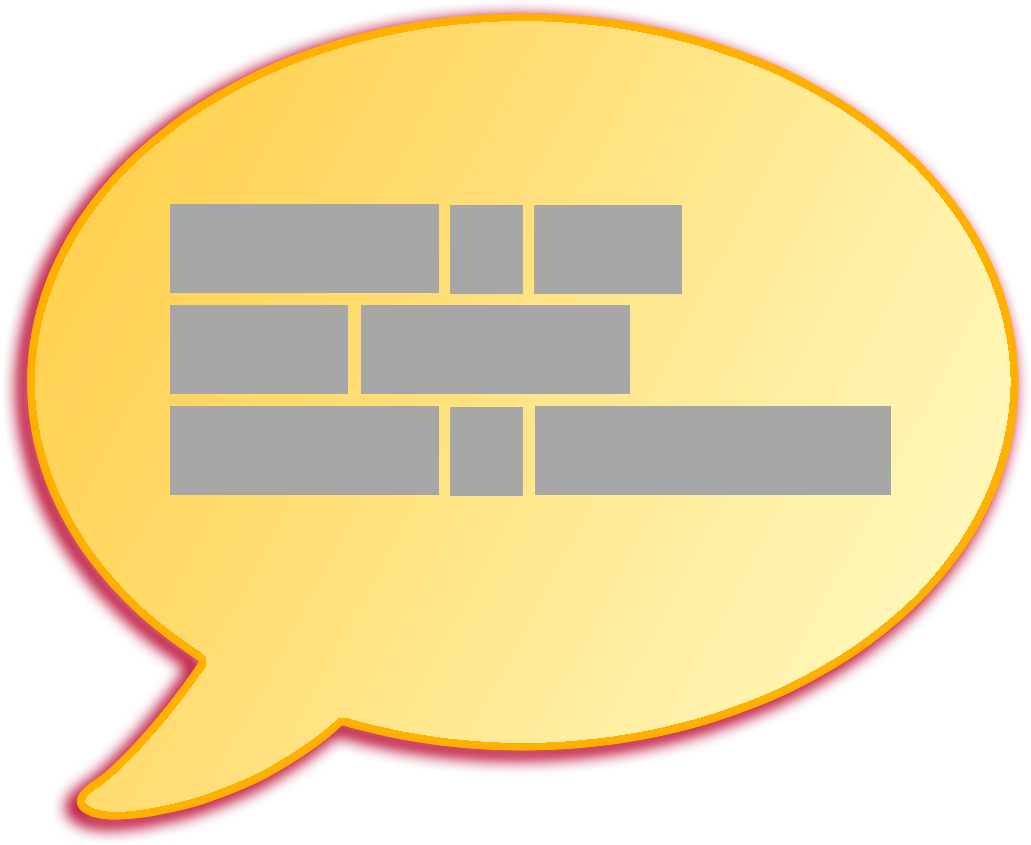
Today we've introduced a great new feature: you can now tag any example sentence in Kanshudo as a favorite (e.g. from example search, the details view when you click on a word in quick search, or from intermediate lessons). Then, from your favorites home, you can create flashcards for the sentences.
Flashcards display the sentence (without any furigana or readings) on the front so you can practice trying to read it. On the back, you'll see the full reading, the English, and the usual Kanshudo display for sentences, with details of each word used, and kanji in our cascading kanji format.
Studying sentences is a very powerful way to lock words and kanji in your mind. By seeing them in context, your mind has a lot more to associate them with, and the more you can link new knowledge to what you already know, the easier it is to remember.

A guest article on studying Japanese by our founder, Jonathan Kirk, was published recently on Tofugu, one of the leading blogs on all things Japanese. Read about Jonathan's personal journey to kanji mastery!
"This one might be one of the most helpful of this series so far!"
Benjamin C.
Posted: 2017-08-10,
Tags:
partners
visualization

We're delighted to announce another great collaboration: visualizations of kanji components from The Kanji Map. From the details pages of about 3000 kanji (including most Jōyō and Jinmeiyō), you can explore an interactive visualization of the kanji with its components. The great thing about The Kanji Map is that you can explore each component directly - clicking on a component transforms the display to show you kanji using that component. And, each kanji links back to Kanshudo, so you can move backwards and forwards between Kanshudo and The Kanji Map. Use Kanshudo for kanji and word lookup, bookmarking and flashcards, and use The Kanji Map to find more kanji to learn!
Here's a simple example. Check out the
/kanji/漢
details page for 漢 on Kanshudo
. In the components section, you'll see a link to The Kanji Map. Click on the link, and you'll see the representation in the image at the top of this post.Clicking on 'the husband with the grass mouth' component, 𦰩, instantly shows you all three Jōyō kanji that use it. Clicking any of those three kanji gives you the details, along with links back to Kanshudo. As well as being visually pleasing, The Kanji Map gives you a sense of how many kanji really use a component - it's a great way to 'get a feel' for a component.
Pro tip: on Kanshudo, you can search for all kanji which use a component using the 'component search' feature in the quick or details view of any kanji. For example, here's a
/searchcg?q=𦰩
component search for 𦰩
.Kanji Builder, along with a conversation with our founder Jonathan Kirk, was featured on Joy o' Kanji, the kanji 'deep dive' website. Joy o' Kanji's founder, Eve Kushner, writes about her thoughts on how Kanji Builder can help you learn kanji, and on learning generally. Here's a direct link to the article - Kanji Builder on Kanshudo.
Try Kanji Builder for yourself! It's a great way to help you learn kanji, and it's a lot of fun.
Visit our Joy o' Kanji kanji collections for direct links to Joy o' Kanji's essays, or explore their site directly.
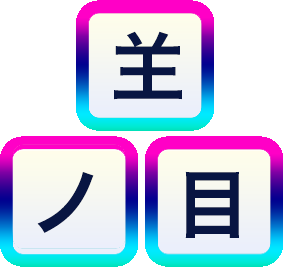
Warning: this is a highly addictive way to learn kanji!
Build kanji from their components: choose the correct components from the supplied list, and drag them to the correct places on the grid. Set your preferred difficulty level, and then play in study mode or high score mode. Kanji Builder is very challenging, but it is one of the best ways we have found to cement kanji in your mind!
Posted: 2017-06-27,
Tags:
games
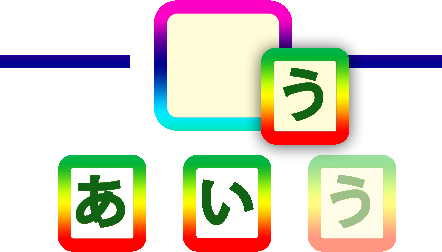
One of our most popular lesson games, Sentence Complete, is now available to play standalone! Sentence Complete is a fun way to test and expand your vocabulary while practicing reading real Japanese sentences.
You are shown a sentence with a few blanks where kanji should be, and you're given a selection of kanji to choose from. Drag the correct kanji over the blanks to complete the sentence. You have five 'lives' - incorrect kanji choices; try to complete as many sentences as you can before you run out of lives!
If you are just getting started, try some simple sentences. Or try something more complex if you've been studying for a while. If you're up for a challenge, try something fiendish! You can set your difficulty range manually any time. Sentence difficulty is based on Kanshudo usefulness level - set your default usefulness preference in your account page.
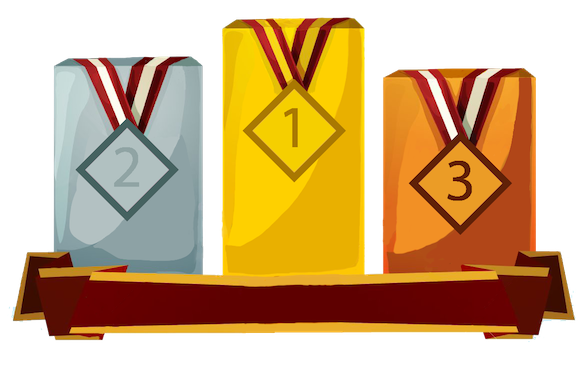
We are delighted to announce a key new component to the Kanshudo system: a simple and effective way to prioritize your vocabulary studies.
One of the keys to learning vocabulary is to focus on words that are most useful for you. However, this is not easy: if you look up a word, how do you know whether you should learn it or not? You may encounter many more words than you have time to learn - how do you know which ones to study?
Now Kanshudo can give you the answers. Based on the most comprehensive analysis of contemporary Japanese usage undertaken, we have classified all 260,000 words in our system by 'usefulness', and ranked each one with a score of 1-12. For every word with multiple forms, we have determined which form is the most useful, and for every word with multiple readings, we have determined which is most common. The details of our methodology are set out in depth in our comprehensive new guide, How to prioritize Japanese words to study.
Using the usefulness score, we can now help you focus on precisely the words you need to study. Now when you look up words, Kanshudo can automatically help you study flashcards for the most useful words first. You can use Quick Study to identify words at a specific usefulness level that you don't know, and create flashcards with one click. Or you can play Word Match as a fun way to identify words at your level that you don't know. If you prefer to get the big picture, you can view or download some or all of the most useful 10,000 words in Japanese (sorted into batches of 100, prioritized by usefulness) from our 102 new collections: The most useful 10,000 words in Japanese.
However you choose to study, Kanshudo's goal is to make it easy, efficient and fun for you to learn Japanese. Learning the most useful words first will give you a tremendous advantage.
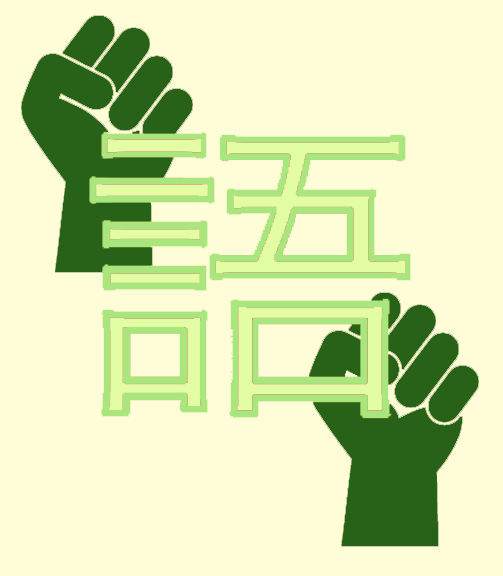
Use Kanshudo to study and track your progress with the Routledge 5000 list! The Routledge frequency list of Japanese words is a set of 5000 of the most commonly used words in Japanese curated by Routledge, a respected British academic publisher.
If you are studying Japanese with any of the Routledge textbooks, you can now use Kanshudo alongside. As with all our kanji and vocab collections, you can quickly create flashcards, use quick study, tag favorites or download the data.
Access the 50 Routledge collections here: Routledge 5000.
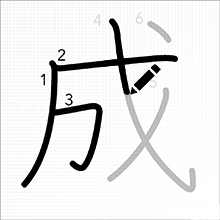
We are delighted to introduce our new 'how to' guide to writing Japanese, which introduces you to the standard strokes used to draw all kanji, provides simple rules to help you determine kanji stroke order, and introduces the differences between different styles of writing. It's also available as a PDF! Check out our new guide here: The Kanshudo complete guide to writing Japanese.
Additionally, we have added a great new feature: you can now practice drawing any kanji (as well as hiragana and katakana). Access the new drawing practice tool with one click from any kanji. Our new drawing practice tool lets you overlay your drawing on a reference model, check your stroke counts, and lets you step back and delete strokes you need to fix.
We've also added drawing practice to our popular hiragana and katakana guides, to complement the free flashcards. Now you can practice both writing and recognizing hiragana and katakana.
You can access the drawing practice tool easily in two ways:
- From the 'cascading kanji' view - whenever you see a kanji in cascading kanji format (the form that shows a kanji summary, with its components in rows below it), just click on the kanji. This will display some additional details without taking you to a new page, and you will see a Draw link.
- From the kanji details view - you will see a new 'Draw' link in the top right, just next to the Favorites star.
Here are some direct links to kanji drawing pages to get you started:
/kanji/draw/漢
漢
/kanji/draw/習
習
/kanji/draw/道
道
Posted: 2017-03-17,
Tags:

Continuing our theme of making it easier to learn Japanese vocabulary, we've made several great improvements to Search and Flashcards. It's now even easier to use Kanshudo as your primary Japanese/English English/Japanese dictionary, your primary Japanese flashcard program, or both!
- One of the hardest challenges for Japanese learners is knowing which form of a word to learn. Some Japanese words can be written in as many as ten different forms, and the same form can often be read in different ways. Ordinarily when you look them up in a dictionary, you are just shown them all in a list. Not Kanshudo!
Kanshudo now includes frequency data on every form of each word, and frequency data for each reading. We prioritize the order of the forms and readings we show you based on frequency, and give you information on relative importance of each form. Now you can focus on learning the most useful forms of words!
- You can tag any form of a word as a Favorite, enabling you to learn that specific form. If a word is commonly encountered in kana only, you can tag the kana form as a favorite.
A major problem with most Japanese dictionaries is that they force you to learn kanji you're not ready for, or all forms of a word at once. Kanshudo makes it much easier for you to learn words by letting you study the form you actually encountered!
- Word definitions are now displayed in a much more dictionary-like form, with part of speech information, and different senses clearly separated.
- Now when you click on a word, you see additional information and example sentences without leaving the search screen.
- Search with romaji!
- Results in Quick Search are now much better prioritized.
Check out these great new features in Quick search - run the examples provided, or try your own search.
In Flashcards, we've added a new option (on by default) to enable you to study flashcards in order of 'usefulnesss'. In other words, if you have a set of kanji, vocab or grammar flashcards, or any mix, Kanshudo will automatically choose the most important cards for you to study first.
This is an incredibly valuable feature if you are picking up words to study from things you read. It's not uncommon as a Japanese learner to have to look up tens or hundreds of words in a newspaper or magazine article - even thousands of words for a novel. How do you decide which of those words to learn? If you learn the less common ones, you're much more likely to forget them. Kanshudo now handles this automatically for you - enabling you to study the right words for your level of Japanese.
Plus, creating flashcards from your Favorites has been improved greatly, with a new wizard which lets you choose what type of favorites to import, select a set to import to, and automatically clear your favorites once the import has finished.

A new scientific study1 showed that using mnemonics, the main memory technique underlying Kanshudo's approach to teaching the kanji, a group of ordinary people became as skilled at remembering information as competitive "memory athletes". The study, published in Neuron by scientists from the Max Planck Institute of Psychiatry in Germany, analyzed the brains of competitive memory athletes using fMRI brain imaging, and then compared the brains of a group of 'normal' individuals before and after training with mnemonic memory techniques. After six weeks of training, their test results were dramatically improved (in some cases almost doubled2), and their fMRI results showed distributed organizational changes in their brains matching the memory athletes. It's official: mnemonics not only improve memory; they can literally improve your brain!
Mnemonics - one of the oldest memory tools known
Mnemonic imagery as a learning aid was in use as far back as Ancient Greece3. Cicero wrote of a legend in which the poet and wise man Simonides was fortunate enough to step out of a banquet hall just before the roof collapsed, and was afterwards able to identify those who were not so lucky by consulting a mental map he had made of their faces. In Roman times, the technique evolved into the 'method of loci' 4, in which objects to be remembered are placed at loci (places) in a mental map of a physical location. In modern times this technique is often referred to as the 'memory palace' 5.
For most people, mnemonics are more familiar in the form of simple acronyms to help remember commonplace sequences, such as Every Good Boy Deserves Favor to illustrate the notes of the lines of the treble clef, E-G-B-D-F. More generally, a mnemonic is a means of encoding information to be remembered within something - an image, a phrase, an existing memory - that can be more easily remembered.
Using mnemonics to learn kanji
In Kanshudo, we apply this technique to learning the kanji. One of the hardest aspects of the kanji for learners who grew up with an alphabetical native language is the sheer number of symbols to be memorized - the Jōyō kanji ('daily use kanji') is a list of 2136; most Japanese adults know 3000 or more. This is a daunting task! But mnemonics make the task much simpler.
Most kanji are formed from a combination of simpler elements ('components'). Many of these components are very simple, very common, and very easy to learn - for example, 一 ('one'), 丨('stick'), or 口 ('mouth'). As you study, you will rapidly get to the point where you know many components, simply because they come up so frequently.
Kanshudo takes these simpler elements and combines them into a mnemonic - a simple, easy-to-remember phrase that ties together the meanings of the components with the meaning of the more complex kanji. So now when you learn a new kanji, you get a double benefit: you know the new kanji, and you have also refreshed your memory of the components that form it. This technique is extremely powerful, because the more you know, the easier it becomes to learn more.
Get started!
To read more about the use of mnemonics in Kanshudo, see our system overview, or read our detailed guide How to learn the kanji. When you are ready, take a Beginner Lesson, or if you already know some kanji, try the Quiz. You can also study kanji components directly using Kanshudo - see our collection of the 50 most common or our comprehensive collection of all components used in the Jōyō kanji.
1 Mnemonic Training Reshapes Brain Networks to Support Superior Memory: Neuron ⧉2 Scientists show how anyone can improve memory ⧉3 Ancient Imagery Mnemonics ⧉4 Method of loci - Wikipedia ⧉5 Mnemonic - Wikipedia ⧉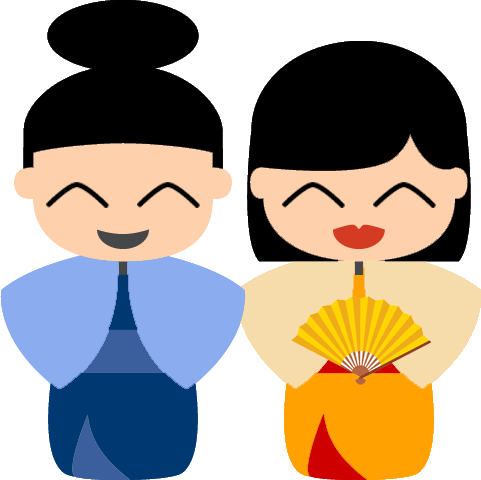
Read our new
/poi/hinamatsuri
feature article on the forthcoming 雛祭り
, one of Japan's great annual festivals.As with all our feature articles, you can see vocabulary and kanji listed so you can quickly and easily tag any you need as favorites to study.
Posted: 2017-02-27,
Tags:
vocabulary
collections
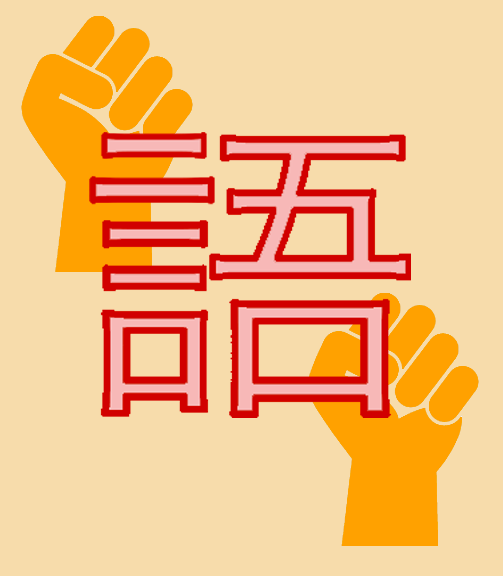
Next in our series of new vocabulary study features: the iKnow! Core 6000 vocab list. You can now use Kanshudo to study and track your progress with the iKnow! list of 6000 of the most useful words in Japanese. Use flashcards, quick study, tag favorites or download the data.
The iKnow! list of 6000 core Japanese words is a great framework for focusing your vocab studies. The series is designed to give you vocabulary from absolute beginner to relative expert level. In Kanshudo the list is divided into an ordered series of 60 collections so you easily prioritize. If you are studying the iKnow! list, you can now use all the power of the Kanshudo system to make your studies more effective and enjoyable.
Access the 60 iKnow! collections here: iKnow! Core 6000.
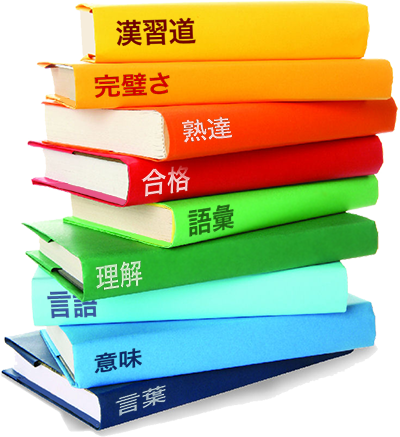
This year Kanshudo will be introducing a series of features to help you power up your Japanese vocabulary. Today we're announcing the first big improvement: the JLPT (Japanese Language Proficiency Test) vocabulary collections, covering a total of 8,183 of the most useful words in Japanese.
As with all our collections, you can use quick study, tag favorites or create flashcards automatically, or just download the data.
The collections are ordered into five sets, corresponding to the five levels of the JLPT - N5 (easiest) through N1. Within each JLPT set, the words are further ordered by 'usefulness' - the most useful words coming higher. So if you study the words in the order presented, you know for sure you are learning vocabulary that will be most valuable to you first. (We'll be explaining more about usefulness soon ... stay tuned!)
We now tag all words in the collections with JLPT badges when they appear in search results, so you can quickly see which variant of a word is needed for the JLPT.
Access the vocab collections here: Kanshudo's JLPT vocabulary collections.
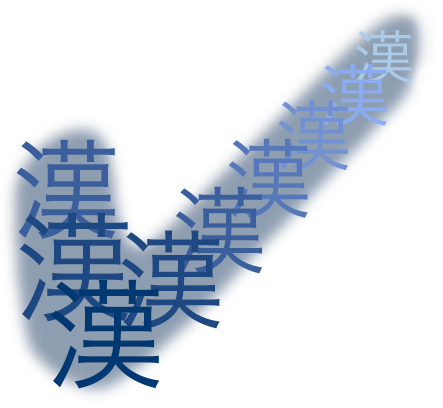
We're excited to announce a new set of kanji collections on Kanshudo: our 'core' collections. We've collected and organized full sets of:
- Kyōiku (the 1006 kanji taught in Japanese school grades 1-6, organized by the grade in which they're taught)
- Secondary (the additional 1130 kanji taught in middle & high school)
- Jōyō (the full set of 2136 'daily use' kanji - the Kyōiku + Secondary)
- Jinmeiyō (the additional 862 kanji allowed for use in Japanese names)
- JLPT (the Jōyō kanji organized by the 5 levels of the JLPT)
- Jōyō added in 2010 (helpful for anyone who began studying kanji before that!)
- Kyōiku to be added in 2020 (get a head start!)
Kanji in most sets are organized by frequency, so you can study the most useful first. For the first time ever, the Jinmeiyō kanji have been ordered by actual frequency of use in Japanese names - so if you have mastered the Jōyō and are ready for the next challenge (such as the Kanji Kentei), you can prioritize your work effectively.
For each collection, we have introduced several standardized study features:
- Quick Study - jump right in and study a set
- Create Flashcards - create cards for organized ongoing study
- View my Mastery - a new feature: view your mastery for all kanji in the collection in one easy place!
- Download - download kanji data in tabular format for export to another flashcard program such as Anki
Study the Kanshudo Collections now!
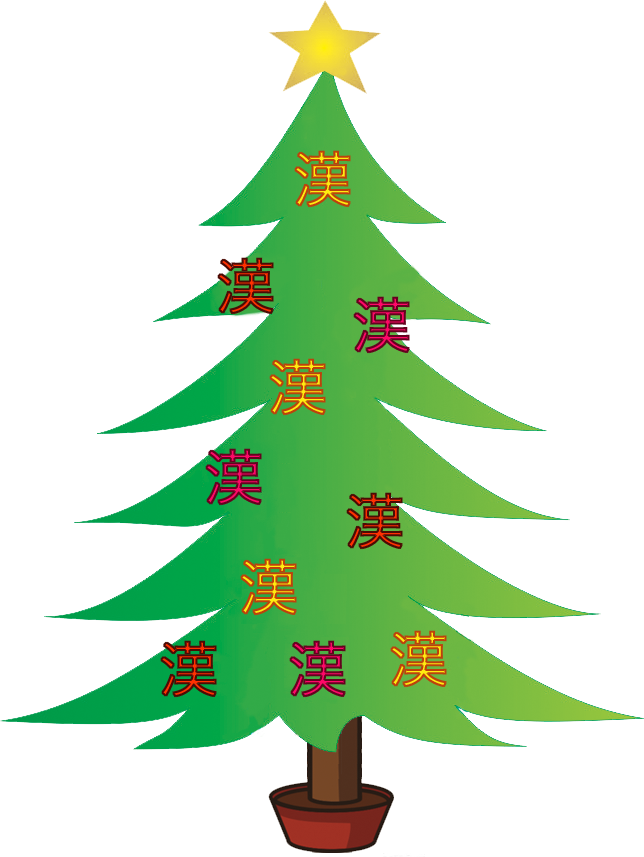
Save 50% on a Kanshudo Pro subscription!
What could better Japanese bring you in 2017?
A new job in Japan?
A magical travel experience?
Deeper relationships with Japanese friends?
Kanshudo can help you realize your Japanese dream. Kanshudo is the fastest and most enjoyable way to learn written Japanese. Master kanji, hiragana and katakana, along with Japanese grammar and vocabulary. Kanshudo is effective, fast and fun.
Act now to set yourself up for success in 2017: Kanshudo's Christmas sale gives you 50% off Pro membership for an entire year! Only $15 - less than 5 cents per day - brings you full access to our beginner and intermediate lessons, our textbook companion, unlimited flashcards and many more great features.
Take advantage of this very special Christmas offer now: Give me 50% off!

We're excited to announce another major new element of the Kanshudo system for learning Japanese: a searchable grammar reference library.
Currently the library contains about 200 articles, covering all grammar used in the JLPT levels N5 and N4, with a smattering of N3-N1. We are adding more articles every day.
You can browse various overview articles listing grammar by category, and the library is searchable in either English or Japanese.
Best of all, you can 'favorite' grammar articles in the same way as kanji or words. Grammar articles you've favorited appear in your favorites list, and can be used for Quick Study or Flashcards just like your other favorites.
You can also provide instant feedback, or let us know if anything doesn't make sense, using the quick link at the bottom of every grammar article.
Grammar search can be accessed from both the SEARCH menu and the STUDY menu for easy access.
Check out Kanshudo's Japanese Grammar Library today and let us know what you think.
Posted: 2016-10-26,
Tags:
newfeatures
summary
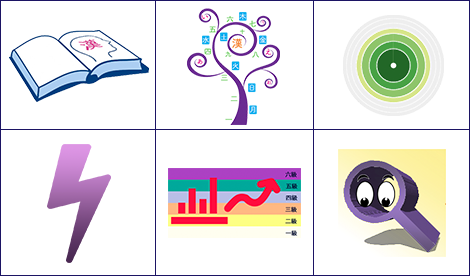
A lot has happened on Kanshudo in the last few months. We've added many new features to help you master Japanese kanji even faster, and to make Kanshudo even more fun for studying written Japanese. This post is a summary so you have everything in one place. Check out the list below, and feel free to contact us if you have any questions.
Textbook Companion | |
 | Use Kanshudo with your favorite textbook! Get the best of both worlds: all the power of Kanshudo, with your existing course. We currently support Adventures in Japanese, Genki, Minna no Nihongo, and Japanese for Busy People. Click here to try the companion now, or read the blog post first. |
Beginner Lessons | |
 | Our 20 Beginner Lessons are designed for absolute beginners: a fun and engaging introduction to the first 100 kanji, along with about 200 words, and about 50 basic grammatical constructions. Take a lesson today, or if you are ready, move on to our Intermediate Lessons, which cover the first 1000 kanji. You can also start with our guide, Getting started learning Japanese. |
The Kanji Wheel | |
 | The Kanji Wheel is a personalized visual summary of your entire knowledge of Japanese kanji. Divided into 7 rings representing different levels of difficulty, the Kanji Wheel shows you at a glance what you know, and gives you intelligent study recommendations. Check out your personalized Kanji Wheel now, or read our detailed 'how to' guide, How to use the Kanji Wheel to guide your Japanese studies. |
Study Points | |
 | Earn free Pro access to Kanshudo! Every time you interact with Kanshudo (study a lesson, learn a flashcard, play a game, tag a kanji as a favorite etc.) we reward you with study points. As you accumulate study points, you are automatically awarded coupons for free use of the system. Check out the Study Points you've already earned! |
Quick Study | |
 | Use any spare five minutes to study! Quick Study lets you create a study set with just a couple of clicks from your favorites, any flashcard set, or cards you forgot or are finding hard. Just five minutes extra study per day can dramatically improve your Japanese over time. Get started here. |
Example Search, Name Search and more | |
 | We've added a lot to our search functionality:
|
The list of improvements is even longer - we've added several more games (we now have six in total: Kanji Match, Word Match, Sentence Builder, Sentence Complete, Phrase Builder and Reading Match), we've added a new mobile-friendly navigation system, we've extended the formats you can use to import flashcards, and we've added keyboard shortcuts to flashcards. We have more great new features coming in the next few weeks and months, so check back again soon!
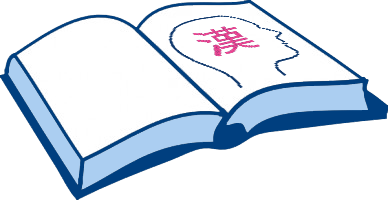
Lessons and games that correspond with your textbook content
Now you can use Kanshudo with your Adventures in Japanese, Genki, Minna no Nihongo, or Japanese for Busy People textbook!
For all of you studying Japanese in school or university, or with a private tutor, you can now get the best of both worlds: the power of Kanshudo for making your studies more fun and effective, along with all the benefits of your existing textbook.
The Kanshudo Textbook Companion is similar to our standalone lessons, except that the words and kanji correspond to the lessons of your textbook. You can review words and kanji introduced in each lesson, practice drawing the kanji, play kanji and word games, and automatically generate flashcards for each lesson.
Each lesson is fun and engaging, and will help you learn the material faster and more effectively. Kanshudo tracks your progress, and presents your kanji knowledge in your personalized Kanji Wheel. Best of all, as you study the lessons in the Textbook Companion, you earn Study Points which count towards free Pro access!
The Kanshudo Textbook Companion supports the latest editions of four popular textbook series: Adventures in Japanese, Genki, Minna no Nihongo, and Japanese for Busy People. We have more books in the works, so if yours is not listed, please register your preference so we can prioritize it for you.
Get started with the Kanshudo Textbook Companion today!
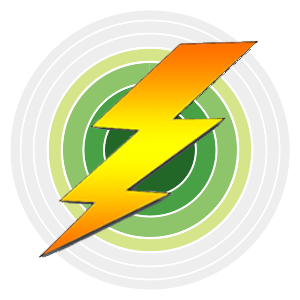
We're delighted to announce some very useful improvements to the kanji wheel and to the flashcard system. Our flashcard system gets some great advanced management tools, including keyboard shortcuts, merge sets, and duplicate identification. For Kanji Mastery, those with high enough Quiz scores can now mark whole rings as mastered or partially mastered, and you can now manage your mastery score for individual kanji.
Improvements to flashcards:
- Keyboard shortcuts in study/review mode (click on the help icon for details - the keys use the same mapping as Anki, which our Anki users will find very convenient)
- Merge flashcard sets, with automatic de-duplication (click the icon which appears above your flashcard sets when you have more than one)
- Duplicate identification between sets (the merge tool identifies duplicates for you)
- Duplicate identification within a set (a new option towards the bottom of a flashcard set details page)
Improvements to the Kanji Wheel and Kanji Mastery:
- See the rationale for your current Kanji Mastery score in a kanji details page (this information will update automatically as you work with kanji going forward)
- Edit your own Kanji Mastery score for an individual kanji (in the kanji details page)
- Flag your mastery of entire rings based on your overall mastery level (this new option will appear in your 'study recommendations' if you achieve suitably high quiz scores)
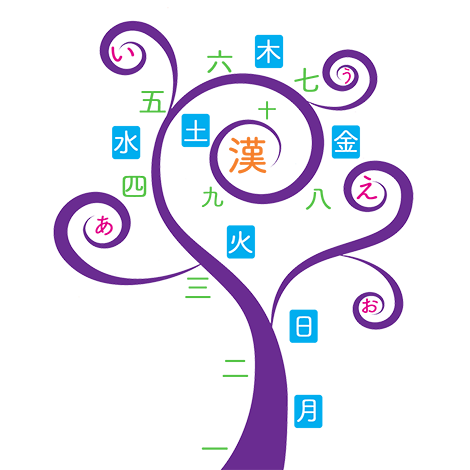
We are very excited to announce a brand new series of lessons created especially for beginners and early students of Japanese: Kanshudo Beginner Lessons.
Our Beginner Lessons take you step by step through the very early stages of learning Japanese, assuming no knowledge whatsoever. Over 20 lessons, you will cover about 50 basic points of grammar, the most important 100 kanji, and about 200 words. Once you have completed the Beginner Lessons, you will be ready for the written part of the first level (N5) of the JLPT (Japanese Language Proficiency Test).
Kanshudo's Beginner Lessons are specially designed by Japanese linguists to be a fun and effective way to get started with Japanese.
- Each lesson starts with a clearly written introduction to the kanji and readings, including plenty of example sentences
- Concise grammar points illustrate the grammar introduced by the examples
- Practice drawing each kanji with a new animated drawing tool
- Play a selection of five games for each lesson, designed to cement your knowledge in a fun way
- Automatically create flashcards for later study and review
- Use a computer, a tablet, or a mobile - or several; Kanshudo will remember your progress
We've prepared a detailed new guide, Getting started learning Japanese. If you are completely new to Japanese, this guide is all you need to make a successful start.
Take your first step towards mastering written Japanese today. Take a Kanshudo Beginner Lesson!

Quick Study is a great new way to learn Japanese effectively on Kanshudo. Now you can use a spare few minutes to focus on anything that needs attention!
Quick Study enables you to choose a set of words or kanji with one click and get started studying them right away. You can create a Quick Study set from your favorites, or using learned/unlearned cards from existing flashcard sets. Or you can use some really effective study options: choose cards you have had most trouble learning, or cards you've recently forgotten.
Once you've chosen a set, you can study it at any time by choosing QUICK STUDY from the main menu. If you don't yet have a Quick Study set, this will first help you create one.
You can also create a new Quick Study set (and discard your current one) by going to the STUDY menu (or the Study index) and choosing Create a Quick Study set. You can go directly there by clicking here.
Anything you do in Quick Study does not affect existing flashcard statistics, so you can use Quick Study to get an extra review of words and kanji you are worried about forgetting!
Did you know that Kanshudo can automatically create word or kanji flashcards for you from a variety of popular dictionaries, or even just word lists you create yourself? Any flashcards you study on Kanshudo, however you create them, count towards your study points! Plus - any kanji flashcards you study will improve your kanji mastery score, and help Kanshudo provide better study recommendations.
Kanshudo supports several key formats for vocab lists:
- Simple text - write cards yourself, or copy/paste from eg Excel
- Midori - a popular iPhone dictionary
- imiwa? - another popular iPhone dictionary (Kanshudo supports two separate imiwa? formats)
Additionally, Kanshudo can create kanji cards for you from any Japanese text - you could just paste an entire paragraph of text and Kanshudo will select the kanji.
We've increased the import limits - Kanshudo Pros can now import up to 50,000 character vocab lists, which enables you to quickly import your entire vocab collection for study.
Any flashcards you create can go into a new set, or an existing set. Plus, as with all Kanshudo flashcards, any kanji included are shown in cascading kanji™ format to refresh your memory of the components and mnemonics. Kanshudo intelligently remembers your progress and shows you cards to learn or review using the spaced repetition algorithm invented by SuperMemo and used in the popular Anki flashcard program.
See our detailed 'how to' guide, or just experiment with cutting and pasting text into the importer yourself - try the importer now.
If you have cards in other formats you want to import, or you are not sure how to import your cards, we'd be happy to help you - just send us a message.
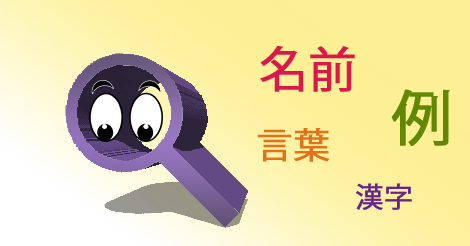
Study Japanese on Kanshudo more easily than ever! We've introduced a bunch of improvements to our search functionality. Now you can search for names and examples as well as kanji and words, see common results for any search in a single page, and get much better prioritization of most useful search results.
Here's the detail on the improvements:
- Quick search, accessible from the link at the top of any page (or the main nav screen if you're on mobile), now provides all common search results in a single view.
- Name search - now you can search from a comprehensive library of over 600,000 Japanese names, in English or Japanese. Plus, we've flagged the most common 10,000 surnames, and the most common given names (1000 each). Where your search is for a common name, we will show you the most common readings - this helps solve one of the hardest challenges in learning Japanese (figuring out how to read a name).
- Example search - now you can search directly in our library of over 150,000 example sentences, automatically displayed with furigana. Explore each one in depth by clicking on the item in the search results, as with kanji / words / names.
- Kanji and word search are improved - now you can search directly in either using the actual kanji/word, the Japanese reading in hiragana, or the English meaning.
- Search switching - now you can run the same search quickly and easily in any of the key search functions in Kanshudo (quick, kanji, word, name or example) using easy links right above the search bar.
Here are a few example searches to demonstrate the new functionality in action:
- Quick search: /searchq?q=漢習道漢習道
- Name search: /searchn?q=佐藤佐藤
- Example search: /searcht?q=日本語日本語
Posted: 2016-05-21,
Tags:
games
newfeatures
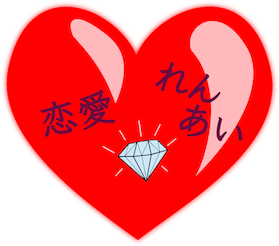
Introducing Word Match, an incredibly fun new way to expand your Japanese vocabulary.
Match each word with its correct reading, in the same way as our very popular Kanji Match. Choose words based on their frequency, or based on the kanji ring of the kanji they use. Quickly study any words you don't know after each round.
Word Match is a fun and effective way to extend your vocabulary quickly with words useful and appropriate for your current level.
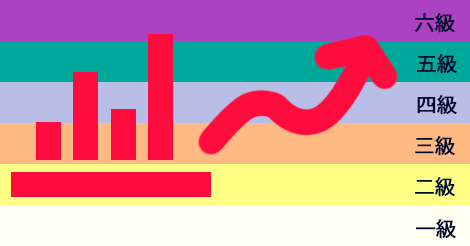
Earn free Kanshudo Pro access just by studying!
We want you to master Japanese. We want you to succeed in your dreams, whether they be top grades in Japanese at school, studying or working in Japan, reading Japanese novels, or building deep relationships with Japanese speakers. We want to help you get there by studying effectively and efficiently.
So today we are announcing an amazing new benefit on Kanshudo: earn free Pro access to Kanshudo ... just by studying! That's right: the more you study, the more free Kanshudo Pro access you get! Here's how it works.
- Every time you interact with Kanshudo, you earn 'study points'. You can earn study points from studying flashcards, taking lessons, taking the quiz, playing games and more.
- The study points you've earned can be viewed at any time by clicking the new study points link in the main navigation at the top right. You can also click here.
- Your study points screen also lets you see view your detailed study history - you can find out what kanji you've studied, and you can see how your studies affected your kanji mastery score for that kanji.
- As you pass defined thresholds, you will automatically see coupons appear in your study points screen. Just click on any coupon to apply it to your account. Once applied, coupons never expire, and are automatically applied to subscription payments.
- You will also receive a weekly study update, with a summary of your study points, along with your kanji mastery score , and our top intelligent study recommendation. You can manage your preference for the weekly study update any time from your account details page, or directly here.
We sincerely hope this awesome new benefit makes the full power of Kanshudo accessible to every student of Japanese. Study on Kanshudo today and accelerate along the road to kanji mastery!
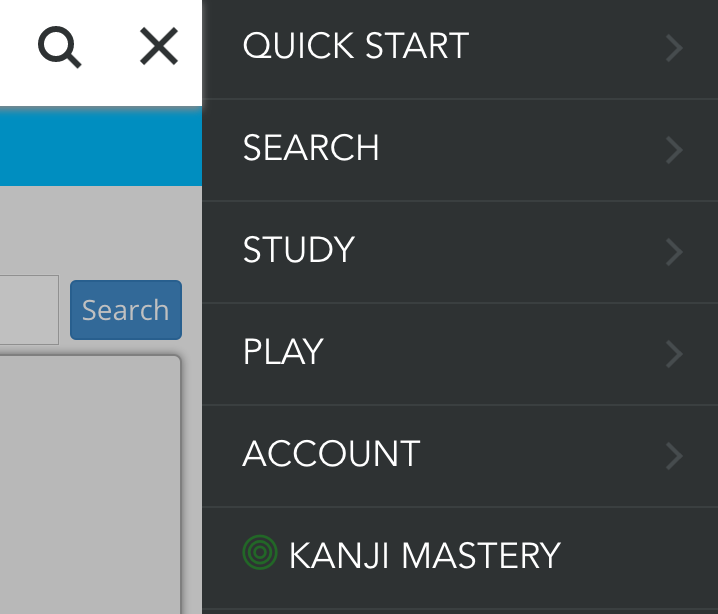
We're delighted to introduce our new navigation system, which makes accessing Kanshudo even easier and more accessible! The new nav:
- Maintains the color scheme and general feel of the previous nav to aid your visual memory!
- Includes 'quick search' - you can now search for kanji and words without leaving your current page
- On larger screens, shows all key options in an overlay when you select an item
- On smaller screens, shows the full menu when you click on the navigation icon in the top right of the screen
In addition to the new nav system, we've modified the design of Kanshudo so it now works across all screen sizes. Whatever device or devices you want to use to access Kanshudo, you can use all features of the system, and all your favorites and flashcards etc will be automatically available. We're still ironing out a few stylistic kinks, so if you run into any problems please let us know!
Kanshudo is your AI Japanese tutor, and your constant companion on the road to mastery of the Japanese language.
To get started learning Japanese, just follow the study recommendations on your Dashboard.
You can use Quick search (accessible using the icon at the top of every page) to look up any Japanese word, kanji or grammar point, as well as to find anything on Kanshudo quickly.
For an overview, take the tour.
